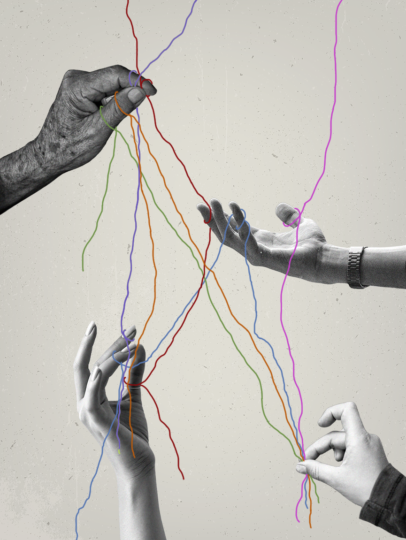A traumatic event can leave a lasting imprint. Today, there is ample research on how the 1947 partition, characterised by widespread violence and bloodshed, impacted not only the survivors but also the generations that followed. The trauma responses that were commonly seen in individuals who lived through the partition—hypervigilance, emotional numbing, a scarcity mindset and identity issues to name a few—are also often present in their descendants. This phenomenon, where the ramifications of adverse experiences reverberate across decades and even centuries, is known as generational, or intergenerational, trauma. When left unidentified and unaddressed, this form of trauma, which allows a past that we didn’t experience first-hand to shape our perception of the present, can significantly affect our quality of life. Ahead, three mental health experts explain how breaking this vicious cycle can be liberating.

Understanding and identifying generational trauma
Generational trauma stems from varied sources—distressing historical events, natural disasters, accidents and abuse are some triggers—and is passed down in ways that aren’t always clear or conscious. Rahat Sanghvi, a trauma therapist, explains that we learn best through observation. “The way we experience our world is influenced by the way our caregivers respond to their world. For example, my family has always placed a huge emphasis on beauty, especially for women, as this was the social currency that secured their financial and social future. This has translated into the younger generations having disordered eating and body image concerns,” says Sanghvi. In addition to subconsciously adopting behavioural patterns prominent in family members, several newer studies suggest that generational trauma can also be transferred epigenetically. A traumatic experience can alter gene expression—the way our genes are turned on and off—and these modifications can potentially be inherited by subsequent generations. “Research has found that trauma can change the brain structure and chemistry—it can impact attention, memory and even executive functioning. This can then get passed down as a part of our biological endowment,” explains Tamanna Edwards, a psychotherapist and research scholar.
Another challenging aspect of generational trauma is that there’s no single way in which it manifests, and this makes it difficult to draw up an exhaustive list of tell-tale signs. However, there are certain patterns that are frequently observed in such cases. “Emotional distancing, feelings of shame or guilt, maladaptive behaviours, intrusive thoughts, sleep difficulties, social withdrawal, anxiety and unexplained sadness are a few examples. But, often, people can find it hard to identify some of these signs as a trauma response because they are so normalised and commonplace,” adds Edwards, explaining that identification, especially initially, isn’t easy.
Healing generational trauma
Despite the many complexities involved, healing generational trauma is possible and even crucial. Nyamat Chadha, a Mumbai-based psychologist, succinctly sums up the importance of keeping the cycle from continuing. “I’m reminded of a quote by author and therapist Terrence Real. He said, ‘family dysfunction rolls down from generation to generation, like a fire in the woods, taking down everything in its path, until one person in one generation has the courage to turn and face the flames. That person brings peace to their ancestors and spares the children that follow.’ People who are willing to do the work—not just their inner work but also the work of breaking the cycle of trauma—are called cycle breakers,” she says.
Through somatic experiencing—a form of mind-body therapy focused on helping with trauma—and psychotherapy, particularly when it’s facilitated with relevant family members, we can reframe the narrative for ourselves as well as the generations to come. “It’s important to understand that these are systemic concerns, and while we can do a lot of work individually, family-focused or community healing can greatly support the process,” says Sanghvi. In the event that this isn’t possible, individual therapy coupled with effective communication could also be a helpful approach for many. “A client who discovered that her family was always dismissing emotions as ‘weak’ or ‘not logical enough’ found herself repeating the same behaviours with her children. By working through this in therapy, she initiated a conversation with her mother about emotions. This slowly led to a shift in her mother’s thinking and slightly loosened the grip of intergenerational trauma,” says Edwards.
Apart from repairing strained relationships, addressing generational trauma can lead to many liberating outcomes. It can, above all else, enable us to navigate the present more mindfully and authentically. Sanghvi explains that we often tackle current situations using the survival strategies that our ancestors may have developed when faced with threat. “When we work through intergenerational trauma, we open ourselves to the present moment,” she says. Additionally, as we learn about the origins of overwhelming or uncomfortable emotions and try to ease them, we take back control of our lives. This leads to a greater sense of empowerment and confidence. “The thoughts we have about ourselves and our self-esteem can change as we drop the weight of emotions that we are carrying owing to trauma experienced over generations. And once our relationship with ourselves changes, the impact of it can be seen in all areas of our life,” concludes Edwards, highlighting that breaking the cycle of trauma can eventually lead to a more enriching and meaningful life.